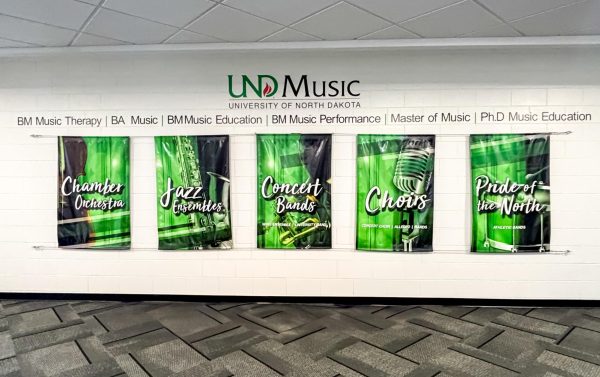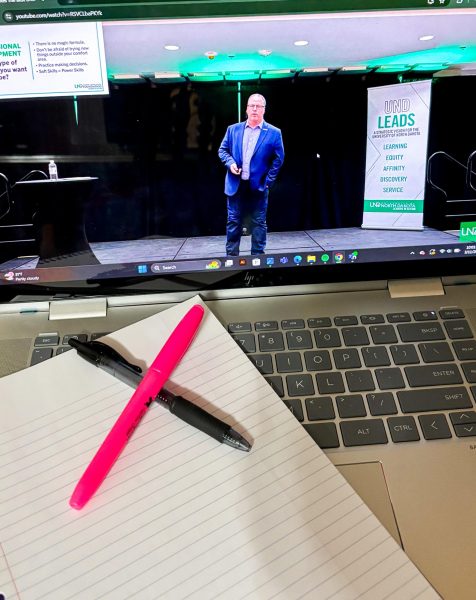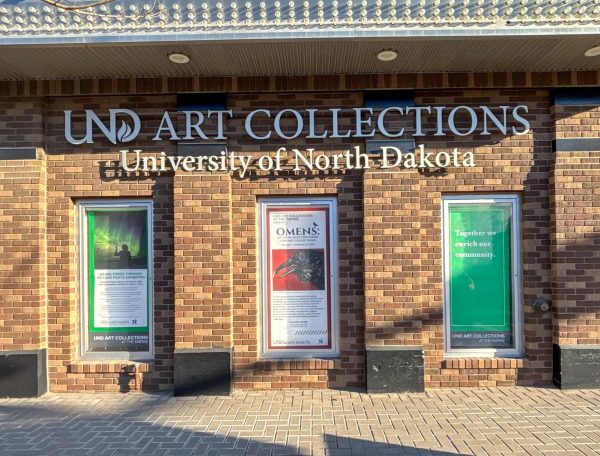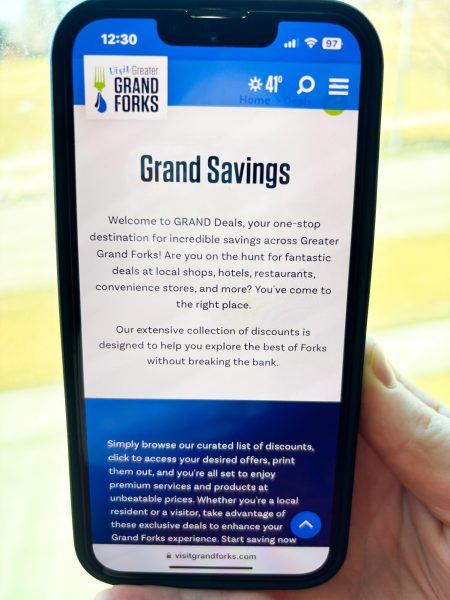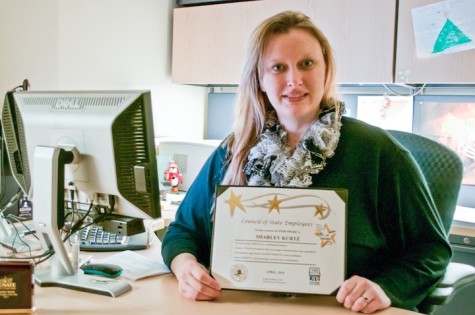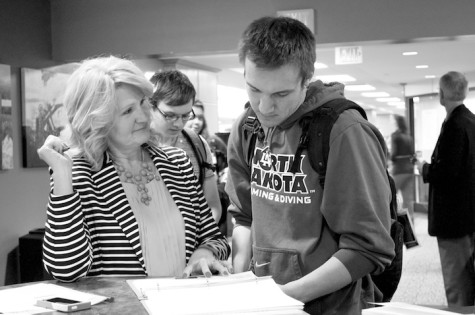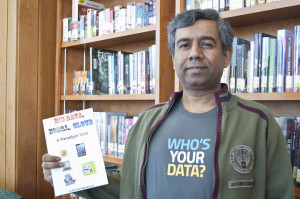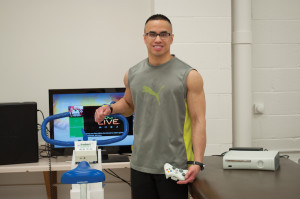Center turns research into real life
Hidden UND affiliate handles multimillion dollar research contracts, employs students
Director Gerald Groenewold discusses his role at the International Center for Applied Energy Technology on Friday. Photo by Shae Bonifacio/The Dakota Student.
Although it’s unknown to most university students and faculty, the Energy & Environmental Research Center does nearly $200 million worth of research every year.
The center’s goal is putting research into practice as it strives to move $35 million worth of technology contracts out of the laboratories and into the commercial marketplace so the world can benefit from them.
The hidden gem is located near the site of the old Ralph Engelstad hockey arena in a 280,000 square foot facility comprised of 26 different buildings with four floors of analytical research laboratories. It’s recognized as one of the world’s leading developers of cleaner and more efficient energy technologies and environmental technologies to protect and clean our air, water and soil.
Director of the Energy Research Center Gerald Groenewold said the research center is strictly a business.
“We are for all practical purposes a business,” Groenewold said. “We have never asked for any state money. I made a promise to myself in 1974 that if I could make this work as a state employee, I would never accept state money unless it was competitive.”
Groenewold takes pride in the fact that the organization has its freedom.
“This place is about freedom” Groenewold said. “This is not a social welfare organization; this is a business. We live by our wits. I like to say that we eat what we kill here, and so we’re a very aggressive group of folks.”
The center has clientele in 52 countries and all 50 U.S. states, many of which are Fortune 500 companies. With 96 percent of it’s clients being non-federal, the research facility focuses primarily on working with private industry, which Groenewold sees as the key to success.
“We don’t just take whatever grants the government’s handing out,” Groenewold said. “We actually send out proposals for competitive dollars.”
Groenewold’s father was an entrepreneurial man and raised Groenewold to be the same.
“I believe in building businesses,” Groenewold said. “I believe in doing practical research, (and) I’m very careful in never breaking Thomas Edison’s basic rule of life: don’t invent something nobody wants. There’s an awful lot of that happening in this world.”
Groenewold said having private sectors involved in his business is a way to avoid this.
“They understand the economic setting in which technology might go or might not,” he said. “So the most important form of peer review around here is the private sector investing in what we’re doing. If they’re not, then we shouldn’t be doing it because nobody cares.”
Last year the center held 200 contracts, of which 95 percent were with private sector enterprises.
“There’s peer review in everything we’re doing,” Groenewold said. “The market is pulling instead of us trying to push something nobody cares about into a non-existent market.”
Freedom from organizational charts is something that Groenewold also finds necessary in his business.
“I’m convinced that the first organizational chart was drawn up by a very short little man with a very significant Napoleonic complex and wanted to demonstrate that he was more important than anybody else,” Groenewold said. “I can’t stand the word ‘boss.’ I don’t want to be anybody’s boss — I want to be their partner.”
The center has been a part of UND since 1983. UND graduate Derek Walters is the center’s Manager for Marketing, Communications and Outreach.
“We are under the President’s office, and we are a non-profit business within UND,” Walters said. “We generate a lot of contract revenue for the center, and, in turn, the university because the university does take a portion of the proceeds.”
Although the center is separate from UND because it is a non-profit business, Walters said the center works closely with UND.
“We do still work very closely with the university departments; engineering is one of them as well as some sciences,” Walters said. “We have anywhere from 30 to 50 different students working here at anytime throughout the year, and a lot of them are engineering or science majors, and they’re wanting to get experience in their field so they can move on and get a full time job when they graduate.”
Students ranging from undergraduates to postdoctorals are carefully selected and put in the middle of cutting edge research projects.
“Even though we aren’t a household brand name, we really have a deep impact on technologies that we use every single day,” Walters said. “You’ve got to turn on your lights; you’ve got to figure out how to produce your electricity, cleanly and environmentally friendly, so it’s affordable. We’re working on all of those technologies that go into producing the electricity to delivering it to our lightbulbs, and everything in between.”
Adele Kieger is a staff writer for The Dakota Student. She can be reached at adele.kieger@my.und.edu.



